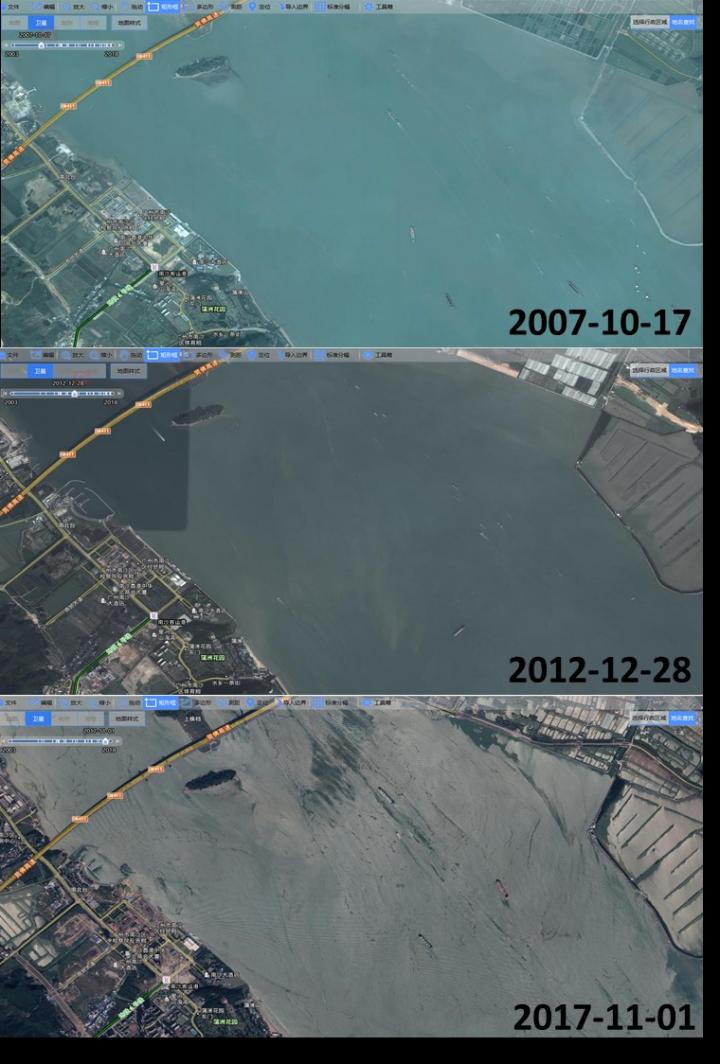
Credit: Obtained from Google Earth, compiled and annotated by Shuang Liu
Excess nutrients from fertilizer application, pollution discharge, and water regulations outflow through rivers from lands to oceans, seriously impacting coastal water quality and ecosystems. Understanding the effects of human activities on riverine nitrogen movement is very important for water environmental management and nitrogen cycle research.
In a recently published paper in Global Change Biology, Prof. Zhenghui Xie, Dr. Shuang Liu, and their co-authors in LASG/Institute of Atmospheric Physics, Chinese Academy of Sciences described how they synchronously incorporated the schemes of river water temperature change, riverine dissolved inorganic nitrogen (DIN) transport and human activities including nitrogen discharge and water regulation into the land surface model CLM4.5 under the framework of CESM1.2.0. Then the model was applied to explore the effects of anthropogenic nitrogen discharge on DIN transport in global rivers.
“We found that DIN in the USA has increased primarily due to the use of nitrogen fertilizers. In contrast, European rivers were affected mainly by point source pollution. However, both aspects are equally important for aquatic environments in China.” Said Xie.
The total anthropogenic impact on the DIN exported to the Pacific Ocean has increased from 10% to 30%, more significantly than any other ocean, over the past 20 years.
In general, the results indicated that incorporating schemes related to nitrogen transport and human activities into land surface models could be an effective way to monitor global river water quality and diagnose the performance of the land surface modeling.
###
Media Contact
Ms. Zheng Lin
[email protected]
86-108-299-5053
Original Source
http://english.
Related Journal Article
http://dx.




